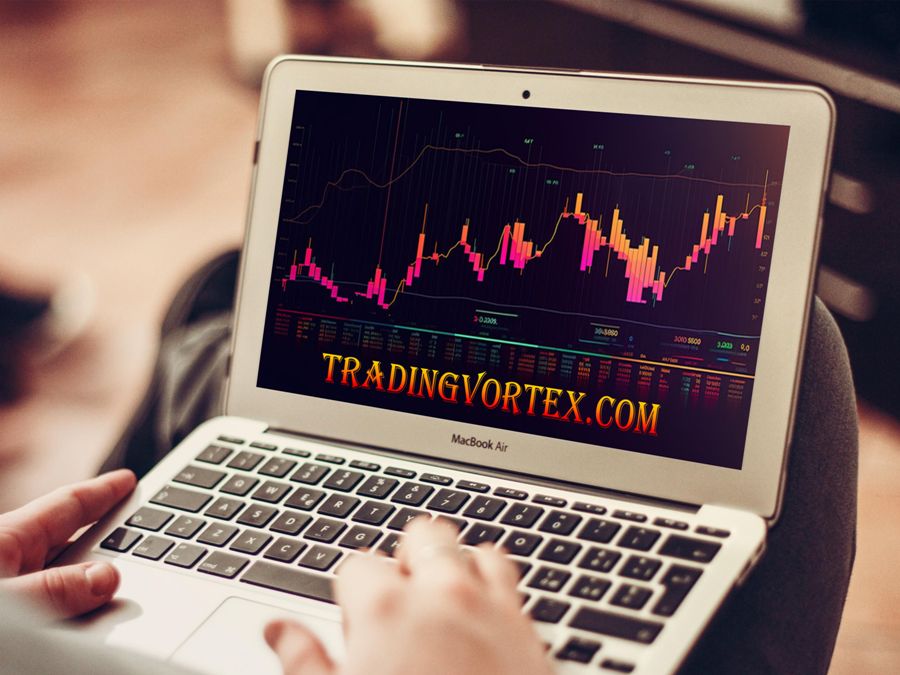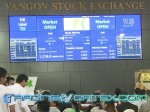Table Of Contents:
- Understanding Momentum in Trading:
Types of Momentum Indicators:
The Mechanics of Momentum in Trading:
The Importance of Momentum in Trading:
Utilizing Momentum Trading Strategies:
Applying Momentum in Different Markets:
Real-world Examples and Case Studies:
Resources and Tools for Momentum Traders:
Conclusion: Mastering Momentum in Trading.
Understanding Momentum in Trading:
Momentum is a fundamental concept in trading that plays a crucial role in determining market trends and investment strategies. In this section, we will delve deep into "What is Momentum in Trading" and the mechanics of "How Momentum Works" in financial markets.
What is Momentum in Trading? Explained:
Momentum is typically calculated by comparing the current market price with a historical price, often over a specified period. Commonly used momentum indicators include the Relative Strength Index (RSI), Moving Average Convergence Divergence (MACD), and the Stochastic Oscillator, among others. These indicators provide traders with a numeric value representing the strength or weakness of a financial instrument's recent price movements.
Understanding momentum goes beyond merely recognizing price changes; it's about interpreting the significance of these changes. Traders can use momentum to gauge whether a particular asset is overbought or oversold, helping them make more informed decisions regarding entry and exit points.
The Mechanics of How Momentum Works in Markets:
- When momentum is strong and rising, it signifies a bullish market sentiment, suggesting that prices are likely to continue moving upward.
- Conversely, when momentum is weakening or showing a bearish divergence, it may indicate an impending reversal.
Momentum works by allowing traders to quantify the speed and strength of a trend. For example, if the "RSI value is above 70, it suggests an overbought condition, indicating a potential reversal or correction". Conversely, an "RSI below 30 may indicate an oversold condition, signaling a potential opportunity for buying".
Traders also use moving averages in momentum analysis, such as the MACD, which shows the relationship between two moving averages of an asset's price. "When the MACD crosses above the signal line, it suggests a bullish trend, while a cross below the signal line indicates a bearish trend".
By understanding these mechanics, traders can better interpret market movements and employ effective strategies to optimize their trading decisions. The ability to comprehend "What is Momentum in Trading" and "How Momentum Works" is a fundamental skill for anyone looking to succeed in the dynamic world of financial markets.
Types of Momentum Indicators:
Momentum indicators are invaluable tools in trading, offering a range of techniques to assess price movements and market trends. This section provides an in-depth exploration of various "Types of Momentum Indicators," offering traders a comprehensive understanding of their significance and application.
Introduction to Key Momentum Indicators:
Momentum indicators come in various forms, each serving a unique purpose in helping traders analyze price movements. Here, we'll introduce some of the most prominent and widely used momentum indicators.
- Relative Strength Index (RSI): The RSI measures the relative strength of an asset by comparing the magnitude of recent gains to recent losses. Typically ranging from 0 to 100, an RSI value above 70 may signal an overbought condition, while a value below 30 suggests an oversold condition. This versatile indicator helps traders identify potential reversal points.
- Moving Average Convergence Divergence (MACD): MACD represents the relationship between two moving averages of an asset's price. It consists of two lines: the MACD line and the signal line. Crossovers between these lines provide signals for trend changes, making it valuable for traders looking to identify entry and exit points.
- Stochastic Oscillator: The Stochastic Oscillator measures the momentum of an asset by comparing its closing price to its price range over a specific period. It helps traders determine overbought and oversold conditions, signaling potential trend reversals.
Utilizing Momentum Oscillators for Trading Success:
Momentum oscillators, such as the RSI and Stochastic Oscillator, are particularly effective in identifying price extremes and potential reversal points. Traders frequently use them to determine when to enter or exit trades.
Momentum oscillators are ideal for traders seeking short- to medium-term opportunities, as they provide a snapshot of an asset's current strength or weakness, offering valuable insights into price direction.
Following Trends: The Role of Trend-Following Momentum Indicators:
Trend-following momentum indicators are designed to help traders identify and ride existing trends. They can be indispensable in prolonged, well-defined trends. Here are some notable examples:
- Moving Average Convergence Divergence (MACD): While MACD can be used as both a trend-following and momentum oscillator, it is often employed to track the strength and direction of a trend. When the MACD line crosses above the signal line, it signals a potential uptrend, while a crossover below the signal line suggests a potential downtrend.
- Average Directional Index (ADX): The ADX measures the strength of a trend and can help traders identify whether a market is trending or in a ranging phase. A rising ADX indicates a strengthening trend, while a falling ADX suggests a weakening trend or consolidation.
Understanding the various types of momentum indicators, from oscillators to trend-following tools, empowers traders to make informed decisions based on the specific aspects of price movements that matter most to their trading strategy. These tools are vital for assessing market conditions and devising successful trading plans.
The Mechanics of Momentum in Trading:
In the realm of trading, understanding the mechanics of momentum is paramount. This section will take you on a comprehensive journey through the inner workings of momentum, including the intricate process of calculating it, assessing its strength, and recognizing crucial shifts for well-informed trading decisions.
Calculating Momentum: A Deep Dive.
Momentum calculations are at the core of momentum trading. Traders use these calculations to quantify and evaluate the strength of price movements. There are various methods to calculate momentum, but one of the most common and straightforward approaches involves comparing the current price to a historical price over a defined period.
The result represents the rate of change in prices:
- Positive momentum indicates upward price movement.
- While negative momentum implies a downward trend.
The magnitude of the momentum value corresponds to the strength of the trend. Traders can adapt the calculation period to match their trading horizon, whether it's short-term or long-term.
Assessing Momentum Strength: Tools and Techniques.
Once momentum is calculated, traders need tools and techniques to evaluate its strength. This evaluation often involves using momentum indicators to provide a numeric value, helping traders quantify momentum's vigor.
Commonly used tools for assessing momentum strength include:
- Relative Strength Index (RSI): The RSI measures the relative strength of an asset's price, with values typically ranging from 0 to 100. A high RSI value (above 70) indicates strong upward momentum, while a low value (below 30) suggests strong downward momentum.
- Moving Average Convergence Divergence (MACD): MACD's histogram represents the difference between the MACD line and the signal line. A rising histogram implies increasing momentum, while a falling histogram indicates decreasing momentum.
- Average True Range (ATR): ATR measures the volatility in an asset's price, helping traders assess the strength of price movements. A higher ATR suggests stronger momentum and potentially larger price swings.
Identifying Momentum Shifts for Informed Trading Decisions:
Recognizing shifts in momentum is an essential aspect of trading. Traders use various methods and tools to identify these shifts and make well-informed trading decisions.
Momentum shifts can be identified through:
- Divergence: Divergence occurs when the momentum indicator and the asset's price move in opposite directions. Bullish divergence suggests a potential upward reversal, while bearish divergence implies a potential downward reversal.
- Crossovers: Crossovers between the momentum indicator and a signal line or a specific threshold can indicate shifts in momentum. For example, when the MACD line crosses above the signal line, it can signal a bullish momentum shift.
- Pattern Recognition: Chart patterns, such as head and shoulders or double tops, can provide insights into potential momentum shifts when they are accompanied by volume confirmation.
Understanding the mechanics of momentum, calculating it accurately, assessing its strength, and identifying shifts are essential skills for traders looking to make informed decisions in dynamic financial markets. By mastering these aspects, traders can gain a deeper understanding of "What is Momentum in Trading" and "How Momentum Works" to refine their trading strategies.
The Importance of Momentum in Trading:
Momentum is a critical concept in trading, and understanding its importance is fundamental for anyone looking to navigate the complexities of financial markets. This section explores "Why Momentum Matters in Financial Markets" and delves into the "Benefits of Incorporating Momentum in Your Strategy" while also acknowledging the need for "Navigating Risks and Challenges in Momentum Trading."
Exploring Why Momentum Matters in Financial Markets:
Momentum matters in financial markets for several reasons. It serves as a vital indicator of market sentiment and trends. Understanding why momentum is significant can help traders make informed decisions. Here are some key reasons why momentum is essential:
- Indicator of Market Direction: Momentum helps traders identify the direction of the market. Strong upward momentum indicates a bullish trend, while strong downward momentum suggests a bearish trend. Recognizing the prevailing market direction is critical for successful trading.
- Potential for Profit: Momentum trading seeks to capitalize on existing trends, aiming to buy low and sell high (or sell high and buy low) within the scope of a developing trend. This can lead to profitable opportunities for traders who accurately gauge momentum.
- Confirmation of Trends: Momentum indicators often serve as confirmatory tools, bolstering a trader's conviction in their trading decisions. When momentum aligns with other technical or fundamental analysis, it provides added confidence.
The Benefits of Incorporating Momentum in Your Strategy:
Incorporating momentum into your trading strategy offers several advantages:
- Timely Entry and Exit Points: Momentum indicators help traders identify opportune moments to enter or exit trades. When used effectively, they can enhance timing and improve trade execution.
- Risk Management: Momentum analysis provides insights into potential price reversals, enabling traders to implement risk management strategies like setting stop-loss orders to protect their investments.
- Diversification: Momentum strategies can add diversity to a trader's portfolio. By incorporating both momentum and other trading approaches, traders can spread risk and potentially enhance overall performance.
- Adaptability: Momentum strategies are versatile and can be applied across various markets, including stocks, forex, commodities, and cryptocurrencies. This adaptability allows traders to explore different asset classes and trading horizons.
Navigating Risks and Challenges in Momentum Trading:
While momentum trading offers numerous benefits, it's not without its challenges and risks. Here's how traders can navigate them:
- Overbought and Oversold Conditions: One challenge in momentum trading is correctly identifying overbought and oversold conditions. Using indicators like the RSI can help, but traders must exercise caution to avoid premature entries or exits.
- False Signals: Momentum indicators may generate false signals, especially during periods of market consolidation. Traders need to apply other forms of analysis to filter out noise and confirm momentum signals.
- Market Volatility: Highly volatile markets can lead to rapid and unpredictable price swings. Traders need robust risk management strategies to mitigate the impact of sudden momentum shifts.
- Psychological Factors: Momentum trading can be psychologically demanding, as traders need discipline and emotional control to avoid impulsive decisions based on short-term price movements.
Understanding the importance of momentum, its benefits, and the associated risks and challenges can help traders harness its power effectively. By incorporating momentum into their trading strategies, they can gain a competitive edge in financial markets and achieve more consistent and informed trading results.
Utilizing Momentum Trading Strategies:
Effectively utilizing momentum trading strategies is crucial for traders seeking to capitalize on the power of momentum in financial markets. In this section, we'll explore "Proven Strategies for Effective Momentum Trading," delve into the art of "Timing Your Trades with Momentum," and discuss "Mastering Risk Management Techniques in Momentum Trading."
Proven Strategies for Effective Momentum Trading:
- Trend Following: A classic momentum strategy involves following trends in the market. Traders identify assets with strong upward momentum and buy them, or assets with strong downward momentum and sell them short. This strategy aims to ride trends until signs of exhaustion appear.
- Breakout Trading: Breakout strategies involve identifying key support or resistance levels and trading when an asset's price breaks above (in an uptrend) or below (in a downtrend) these levels. Breakout traders believe that such movements are indicative of strong momentum and offer lucrative trading opportunities.
- Relative Strength Comparison: Traders often compare the relative strength of one asset to another, seeking assets that outperform their peers. This strategy allows traders to invest in assets showing stronger momentum relative to their counterparts.
Perfecting the Art of Timing Your Trades with Momentum:
Timing is everything in momentum trading. To make the most of momentum, traders need to master the art of timing their trades effectively:
- Using Technical Indicators: Various technical indicators, such as moving averages, can help traders time their entries and exits. For instance, "waiting for a short-term moving average to cross above a long-term moving average may signal an optimal entry point".
- Pattern Recognition: Chart patterns like flags, pennants, and double tops or bottoms often precede strong momentum moves. Recognizing these patterns can assist traders in entering trades at the right moment.
- Volume Analysis: Analyzing trading volume can help traders gauge the strength of momentum. A surge in volume accompanying a price move can validate the momentum and signal an opportune entry point.
Mastering Risk Management Techniques in Momentum Trading:
Risk management is essential in momentum trading, as the rapid nature of price movements can lead to unexpected losses. To master risk management in momentum trading, traders can consider the following techniques:
- Setting Stop-Loss Orders: Placing stop-loss orders helps limit potential losses. Traders can establish predefined price levels at which their positions will automatically be closed to minimize losses in the event of adverse price movements.
- Position Sizing: Determining the appropriate size for each trade based on risk tolerance is vital. Conservative position sizing ensures that no single trade carries too much risk.
- Diversification: Spreading risk across different assets or asset classes can reduce the impact of a single unfavorable trade on an overall portfolio.
- Continuous Monitoring: Monitoring positions and staying updated on market conditions is crucial. This allows traders to adapt to changing momentum and adjust their strategies accordingly.
Utilizing momentum trading strategies effectively involves a combination of technical analysis, timing, and sound risk management. By mastering these aspects, traders can harness the potential of momentum to make informed and profitable trading decisions.
Applying Momentum in Different Markets:
Momentum trading is a versatile strategy that can be applied to a variety of markets, each with its unique dynamics. In this section, we will explore the application of momentum trading in various markets, including "Harnessing Momentum in Stock Markets," "Navigating the Forex Market with Momentum," and "Unveiling the Power of Momentum in the Cryptocurrency Arena."
Harnessing Momentum in Stock Markets:
- Identifying High Momentum Stocks: In the stock market, momentum traders seek out stocks with strong upward or downward trends. Stocks that have shown consistent price movements over a specific period are often prime candidates.
- Earnings Momentum: Earnings announcements can have a significant impact on stock prices. Momentum traders often focus on stocks that are about to release their earnings reports or those that have just reported better-than-expected earnings.
- Sector Rotation: Traders may employ sector rotation strategies, moving capital to sectors showing strong momentum while exiting those with weaker performance. This approach capitalizes on broader market trends.
Navigating the Forex Market with Momentum:
- Currency Pair Selection: In the forex market, momentum traders select currency pairs showing strong trends. Pairs that exhibit clear upward or downward momentum are favored, as they present opportunities for profit.
- News and Economic Indicators: Economic data releases, such as non-farm payrolls, GDP reports, and central bank statements, can create significant momentum in currency markets. Traders monitor these events to align their trades with market-moving news.
- Cross-Currency Momentum: Traders also explore cross-currency momentum, identifying pairs where one currency is strengthening while the other weakens. Cross-currency momentum trading allows for diversification and takes advantage of global economic shifts.
Unveiling the Power of Momentum in the Cryptocurrency Arena:
- Volatility and Cryptocurrency: The cryptocurrency market is known for its extreme volatility. Momentum trading in this arena can be particularly rewarding, as assets can exhibit rapid and substantial price movements.
- Technical Analysis in Cryptocurrency: Cryptocurrency momentum traders often rely heavily on technical analysis, identifying key support and resistance levels and using indicators like the Relative Strength Index (RSI) to gauge momentum strength.
- Initial Coin Offerings (ICOs): ICOs often generate momentum in the cryptocurrency market. Momentum traders keep an eye on promising ICOs and participate early to ride potential price surges.
Applying momentum trading strategies in various markets demands an understanding of the unique factors and dynamics that drive momentum in each. By tailoring their approach to the specifics of stock markets, the forex market, or the cryptocurrency arena, traders can harness the power of momentum to make informed and potentially profitable trading decisions.
Real-world Examples and Case Studies:
Real-world examples and case studies provide invaluable insights into the practical application of momentum trading. In this section, we will explore "Learning from Successful Momentum Trades," uncover "Insights from Failed Momentum Trades," and gain "Pragmatic Wisdom from Trading Experts."
Learning from Successful Momentum Trades:
- Trend-Following Success: Examining successful momentum trades can reveal how traders identified trends and capitalized on them. A classic example is traders who recognized the strong momentum in tech stocks during the dot-com boom of the late 1990s and early 2000s. By riding this trend, they achieved substantial gains.
- Earnings Momentum: Successful momentum traders often attribute their gains to well-timed earnings trades. For instance, traders who correctly predicted strong earnings reports and invested in stocks before positive earnings surprises have profited significantly.
- Cryptocurrency Boom: The cryptocurrency market has seen numerous successful momentum trades. Bitcoin's remarkable rise in 2017 is a prime example. Traders who recognized the momentum early and entered the market at the right time witnessed substantial returns.
Avoiding Pitfalls: Insights from Failed Momentum Trades.
- Overconfidence: Some traders become overconfident when they experience a series of successful momentum trades. This can lead to riskier strategies and losses when momentum weakens. An example is the "dot-com bubble burst" when many momentum traders experienced significant losses.
- Ignoring Risk Management: Failing to implement proper risk management can lead to significant losses. For instance, during the financial crisis of 2008, traders who disregarded risk management suffered substantial setbacks as the market experienced a sharp reversal.
- Market Manipulation: Momentum traders need to be cautious of market manipulation and pump-and-dump schemes. These can lead to failed momentum trades, causing traders to lose substantial amounts. It's essential to conduct thorough due diligence to avoid such pitfalls.
Pragmatic Wisdom from Trading Experts:
Trading experts offer valuable advice for those seeking success in momentum trading:
- Keep Emotions in Check: Emotional trading can lead to impulsive decisions. Experts emphasize the importance of maintaining emotional discipline, adhering to trading plans, and avoiding chasing trades based on emotions.
- Continuous Learning: Staying updated with market developments, new indicators, and trading strategies is crucial. Experts suggest that traders should never stop learning and adapting to changing market conditions.
- Risk Management: Experts stress the significance of risk management. Preserving capital is paramount, and traders should establish clear risk-reward ratios, employ stop-loss orders, and diversify their portfolios.
Real-world examples and insights from both successful and failed momentum trades, coupled with wisdom from trading experts, provide valuable lessons for aspiring and experienced traders. Learning from these experiences can significantly enhance one's understanding of momentum trading and help develop effective strategies for navigating the dynamic world of financial markets.
Resources and Tools for Momentum Traders:
To excel in momentum trading, having the right resources and tools at your disposal is essential. In this section, we will explore "Must-Have Momentum Indicators and Tools," and discuss "Connecting with the Momentum Trading Community through Online Resources and Forums."
Must-Have Momentum Indicators and Tools:
- Relative Strength Index (RSI): The RSI is a must-have momentum indicator for traders. It helps gauge overbought and oversold conditions, making it an invaluable tool for identifying potential trend reversals.
- Moving Average Convergence Divergence (MACD): The MACD is essential for tracking trend direction and momentum strength. Traders rely on its signal line and histogram for buy and sell signals.
- Stochastic Oscillator: The Stochastic Oscillator assists in identifying overbought and oversold conditions. It provides signals based on the percentage difference between the current closing price and the price range over a specific period.
- Average True Range (ATR): ATR measures volatility and helps traders assess the strength of price movements. It's particularly useful for setting stop-loss orders and determining position sizes.
- Real-time News and Analysis Platforms: Staying updated with real-time news is crucial for understanding market events that may impact momentum. Platforms like Bloomberg, Reuters, and TradingView offer comprehensive news and analysis.
Connecting with the Momentum Trading Community: Online Resources and Forums.
- Online Trading Communities: Seek out online trading communities and forums that focus on momentum trading. These platforms are hubs of collective knowledge and experience, allowing traders to engage in discussions, share insights, and learn from one another. The exchange of ideas and strategies within these communities can be a valuable source of information for momentum traders.
- Social Media Networks: Utilize social media platforms to connect with trading experts, market analysts, and fellow traders. Follow individuals who regularly share their thoughts on trading, particularly related to momentum strategies. Engaging with their content can provide fresh perspectives and real-time updates.
- Online Trading Courses: Consider enrolling in online courses that specifically cater to momentum trading. Many online learning platforms offer comprehensive courses covering the essentials and advanced aspects of momentum trading. These courses can be instrumental in deepening your understanding of momentum strategies and refining your skills.
Momentum traders benefit from staying well-equipped with essential indicators, tools, and being connected with the trading community. By deepening their knowledge through recommended books and courses, traders can refine their skills and stay ahead in the fast-paced world of momentum trading.
Conclusion: Mastering Momentum in Trading.
In the dynamic world of trading, mastering momentum is a skill that can set you apart as a savvy and successful trader. Throughout this article, we've embarked on a journey to demystify "What is Momentum in Trading and How It Works." We've delved into the intricacies of momentum calculations, assessed its strength, identified shifts, and explored real-world examples and insights from experts. Now, as we conclude, let's recap what we've learned and chart the path toward becoming a proficient momentum trader.
Recap: What is Momentum in Trading and How It Works?
Momentum in trading is the force that drives price movements in financial markets. It's the embodiment of market sentiment and the strength of trends. Understanding momentum involves calculating it accurately, assessing its strength using various indicators, and recognizing shifts that could influence trading decisions.
Momentum is a versatile tool used in various markets, from stocks to currencies and cryptocurrencies. It's a strategy that can lead to profits, provided it's wielded skillfully. We've examined the significance of momentum in trading, the benefits of incorporating it into your strategy, and the risks you must navigate.
Charting Your Path to Becoming a Successful Momentum Trader:
To master momentum trading, you must take a methodical approach:
- Education: Invest time in educating yourself about momentum indicators, tools, and techniques. Understanding the fundamentals is your foundation for success.
- Practice: Open a demo trading account to practice your strategies without risking real capital. The more you practice, the more you'll refine your skills.
- Risk Management: Implement strict risk management techniques to protect your capital. This includes setting stop-loss orders and sizing your positions properly.
- Continual Learning: The trading landscape is ever-evolving. Stay up-to-date with market news and adapt your strategies accordingly.
- Community and Resources: Connect with the trading community through forums and social media, and consider deepening your knowledge with recommended books and courses.
By following these steps and gaining experience in real-world trading situations, you can aspire to become a master of momentum in trading. Remember that successful trading is a journey of continuous learning and adaptation. The power of momentum is in your hands, and it's up to you to harness it for your financial success in the world of trading.








































 TradingVortex.com® 2019 © All Rights Reserved.
TradingVortex.com® 2019 © All Rights Reserved.